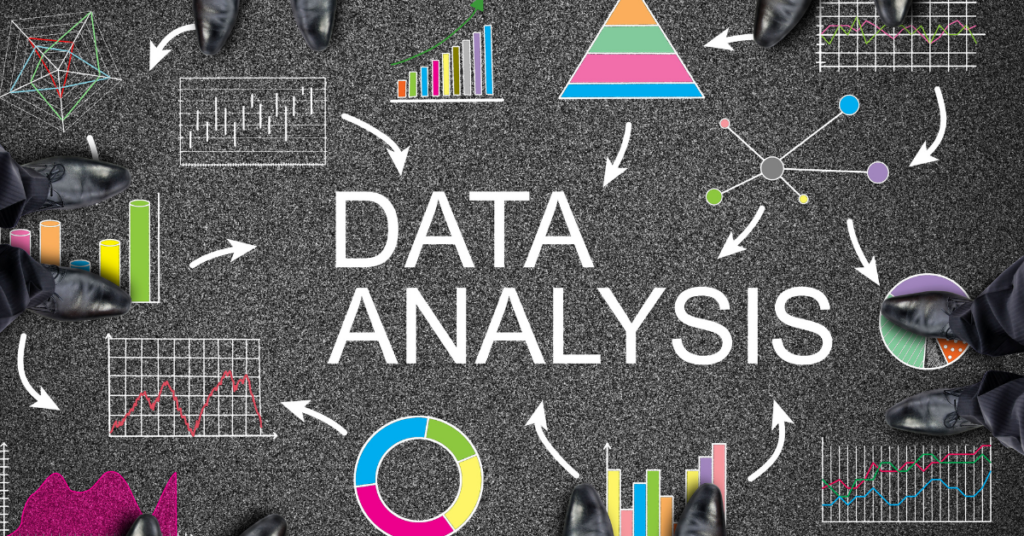What Are Some Applications of Exploratory Data Analysis? Find Out

“Without information, you are just another person with an opinion,” said W. Edwards Deming, the famous economist and statistician. It means that if your work or decisions do not depend on data, then you might be dwelling in the ambit of opinions and instincts. This underscores the role of data analysis in today’s world, where data is the new oil. Exploratory Data Analysis (EDA) forms the backbone of this process as it transforms raw data to obtain meaningful insights that can help identify patterns, relationships, and anomalies necessary for working with data. This blog explores the role of EDA in market basket analysis, customer segmentation, anomaly detection, predictive modeling, and trend analysis.
What is Exploratory Data Analysis?

Exploratory data analysis is a critical first step in the data analysis process, enabling analysts to:
- Make sense of raw data by using data profiling tools to assess its structure, quality, and initial patterns
- Identify any necessary data cleaning and exploration steps to improve data quality, which includes handling missing values and outliers
- Use interactive data visualization tools to create dynamic plots and graphs that allow users to manipulate the views and engage more deeply with the data
Exploratory data analysis utilizes a variety of analytical techniques and tools to provide a thorough understanding of the data’s content, structure, and potential variables of interest. Here’s how it typically unfolds:
- Understanding Data Distributions: Analysts begin by examining the distribution of data points within each variable using histograms, box plots, or density plots. In essence, this step helps in understanding the central tendencies and variabilities
- Comparative Data Analysis: Analysts compare groups or categories within the data to identify patterns or anomalies. For instance, techniques such as cross-tabulations or group summaries are commonly employed for this purpose
- Univariate Analysis and Bivariate Analysis in EDA: These techniques focus respectively on single variables to understand their specific characteristics and on pairs of variables to explore the relationships between them
- Interactive Data Visualization: Tools like Tableau and PowerBI, or Python libraries like Bokeh enable dynamic interaction with the visualizations. Analysts drill down into specific subsets of the data or adjust what data is displayed, enhancing the exploratory process
- Data Profiling Tools: Early in the EDA process, tools such as pandas profiling in Python or the dplyr package in R are used to automatically generate descriptive statistics that summarize each column in the data set
Through these varied approaches, exploratory data analysis equips data professionals with a nuanced understanding of their data. As a result, it helps guide subsequent analysis phases with greater precision and insight.
ALSO READ: How to Become a Successful Data Analyst?
Use Case 1: Market Basket Analysis
Exploratory Data Analysis serves as a foundational tool in market basket analysis. It enables retailers to uncover complex purchasing patterns and optimize business strategies. By leveraging data exploration techniques, EDA facilitates a deeper understanding of the relationships between products purchased together, enhancing decision-making processes.
1. Mining Association Rules
While association rule mining is a specific algorithm used to quantify frequent item sets, EDA plays a crucial role in setting the stage. For instance, through techniques like frequent itemset mining (identifying frequently purchased combinations), EDA can highlight potential associations between products.
2. Visualizing Data Interactions
Interactive data visualization plays a crucial role in interpreting the complex relationships uncovered through EDA. These tools enable retailers to visualize product associations dynamically, making it easier to comprehend and act upon these insights. As a result, effective visualization aids in the rapid assessment and iterative refinement of product placement and promotional strategies.
3. Optimizing Product Placement
Exploratory data analysis guides strategic product placement within retail environments. For instance, insights derived from EDA can better your store layout decisions. This ensures that related products are positioned together to drive incremental sales. Such strategic placements directly influences consumer behavior and enhances shopping experiences.
4. Tailoring Promotions
Additionally, exploratory data analysis assists in optimizing promotional activities. By analyzing patterns from EDA, retailers can design targeted promotions. This helpscater specifically to the buying habits of their customer base.
Use Case 2: EDA in Customer Segmentation
Customer segmentation is about dividing customers into groups based on common characteristics. In essence, this practice allows businesses to target specific audiences with tailored marketing strategies, enhancing efficiency and effectiveness. Exploratory data analysis can significantly enhance customer segmentation by providing insights into diverse customer behaviors and preferences, here’s how:
1. Profiling Customer Data
Data profiling tools in exploratory data analysis play a crucial role in understanding the various attributes of customer data. For instance, analysts use profiling tools that assess data quality, completeness, and distribution, which are essential for effective segmentation.
2. Analyzing Data Distribution
Understanding data distributions through EDA allows marketers to see how customer traits vary and cluster. This uses both univariate analysis in EDA and bivariate analysis in EDA to explore individual and pairwise relationships of variables.
3. Visualizing Customer Segments
Interactive data visualization is vital in presenting customer segments in an engaging and easily interpretable manner. In essence, these visualizations help stakeholders quickly grasp the characteristics of different segments, facilitating strategic decision-making.
4. Enhancing Marketing Strategies
Finally, exploratory data analysis refines marketing strategies by identifying the most responsive customer segments. It uses comparative data analysis to evaluate different segments’ behaviors and preferences, optimizing marketing efforts for maximum impact.
ALSO READ: Data Analyst : Jobs and Salary in India in 2023
Use Case 3: Anomaly Detection

Anomaly detection identifies unusual patterns that do not conform to expected behavior, This is crucial in flagging issues such as fraud, system failures, or significant deviations in data sets. Exploratory data analysis plays a key role in this process by enabling a deeper examination and understanding of these anomalies. Here is how it helps detect anomalies:
1. Identifying Outliers
- Data Exploration Techniques: EDA uses statistical summaries and visual methods to detect outliers. For instance, techniques like interactive data visualization and scatter plots help spot anomalies
- Comparative Data Analysis: This involves comparing observations against established norms to identify data points that stand out significantly, indicating potential anomalies
2. Understanding Data Context and Discerning Anomalies
- Data Profiling Tools: In EDA, data profiling tools provide insights into data completeness, accuracy, and consistency. They are critical in determining whether the anomaly is a true outlier or a data error
- Understanding Data Distributions: Analyzing the distribution helps set thresholds for what constitutes an anomaly based on statistical measures such as standard deviations and interquartile ranges
- Visualizing Anomalies: EDA techniques like heatmaps and time-series graphs spot unusual patterns over time or across different categories. In essence, they help provide a clear visual representation of anomalies
4. Enhancing Detection Algorithms
- Data Cleaning and Exploration: Before applying sophisticated anomaly detection algorithms, EDA ensures the data is clean and well-understood, enhancing the accuracy of these models
- Bivariate and Univariate Analysis in EDA: These analyses help determine if anomalies are isolated to single variables or if they appear in the relationships between pairs of variables, offering clues on the nature of the anomalies
ALSO READ: How to Become a Successful Data Analyst in 2023?
Use Case 4: Predictive Modeling
Predictive modeling is a statistical technique to forecast outcomes by analyzing historical data. Exploratory data analysis can be integrated into predictive modeling. In essence, this integration can help optimize predictive modeling by providing insights that guide the development of robust predictive algorithms.
1. Identifying Patterns with EDA
Exploratory data analysis employs a range of data exploration techniques to discover natural groupings, trends, and patterns within the data. This understanding is crucial for setting up predictive models that are accurately tuned to the data’s inherent characteristics.
2. Finding Relationships
EDA facilitates comparative data analysis and correlation studies to establish vital relationships between variables. These relationships are essential for selecting relevant predictors and understanding how variables influence each other. This directly impacts the predictive model’s effectiveness.
3. EDA and Data Preparation
Before modeling begins, EDA ensures the data is clean and well-prepared. For instance, this includes handling missing values, removing outliers, and ensuring that data distributions are well understood. This helps in improving the accuracy and reliability of the predictive models.
4. Visualizing Predictive Factors
Interactive data visualization is an integral part of EDA in predictive modeling. It allows analysts to explore potential predictive relationships visually and assess the impact of various variables on these relationships. This helps in the analysis process and improves stakeholder communication.
Use Case 5: Trend Analysis
Trend analysis involves examining data over time to identify consistent results or themes. Now exploratory data analysis can enhance this process by enabling the detection of emerging trends and patterns. This helps in strategic decision-making. In essence, EDA’s data exploration techniques can play a crucial role in deciphering the direction and magnitude of trends. Here is how:
1. Understanding Data Over Time
Exploratory data analysis provides tools and methods to analyze time-series data, helping to understand how variables evolve over periods. This is essential for identifying seasonal effects, cycles, and potentially influential outliers.
2. Visualizing Trends
EDA leverages dynamic visual tools that allow analysts to track changes over time. This makes it easier to spot trends and make predictions about future movements.
3. Analyzing Variability in Trends
EDA allows trend analysts to delve deeper into the variability of trends across different segments or categories. This helps us understand which factors are driving changes and how these might influence future outcomes.
4. Predicting Future Trends
EDA not only helps identify current trends but also uses data exploration techniques to forecast future trends. Predictive capability is crucial for businesses planning ahead as it allows them to align their strategies with projected market developments.
ALSO READ: Types of Data Analytics to Improve Business Decision Making
Frequently Asked Questions About Exploratory Data Analysis
1. What is Exploratory Data Analysis and Why is It Important?
Exploratory data analysis examines data sets to summarize their main characteristics, often visually. It is crucial because it allows us to understand the data’s structure, uncover patterns, and make informed hypotheses. This helps in making informed decisions.
2. How Can Exploratory Data Analysis Help in Identifying Trends in Data?
EDA utilizes data exploration techniques such as time-series analysis and interactive data visualization to detect and visualize trends. This helps identify consistent patterns over time, which are vital for strategic planning and forecasting.
3. What Tools are Commonly Used for Performing Exploratory Data Analysis?
Common tools for EDA include statistical software like R and Python, with libraries such as Pandas for data manipulation, Matplotlib and Seaborn for visualization, and advanced tools like Tableau for interactive data visualization.
4. Can You Explain the Difference Between Exploratory Data Analysis and Predictive Modeling?
Exploratory data analysis focuses on understanding data sets and uncovering underlying structures without making predictions. In contrast, predictive modeling uses statistical techniques to forecast outcomes based on this understanding.
5. How Can Exploratory Data Analysis be Applied in Real-World Business Scenarios?
In real-world business scenarios, EDA can be applied to enhance customer segmentation, optimize marketing strategies, perform market basket analysis, detect anomalies, and predict trends. This analysis informs decisions across various departments, from marketing to risk management.
ALSO READ: What is the Future Scope of Data Analytics
In conclusion, whether adjusting to market trends, enhancing customer engagement, detecting anomalies, or analyzing trends—exploratory data analysis provides the foundational analysis required for robust strategic planning. Are you ready to harness the full power of data in your decision-making processes? If you are, consider joining Emeritus’ data analytics courses to gain the skills needed to effectively apply EDA in your organization.
Write to us at content@emeritus.org














